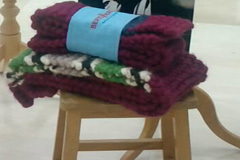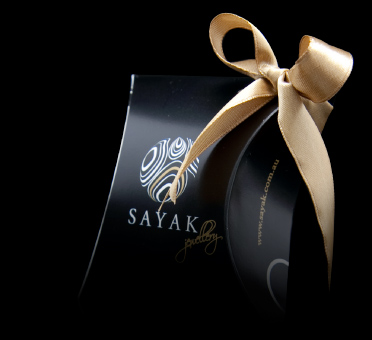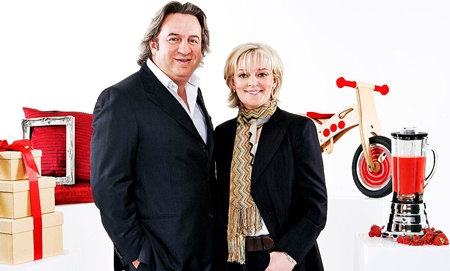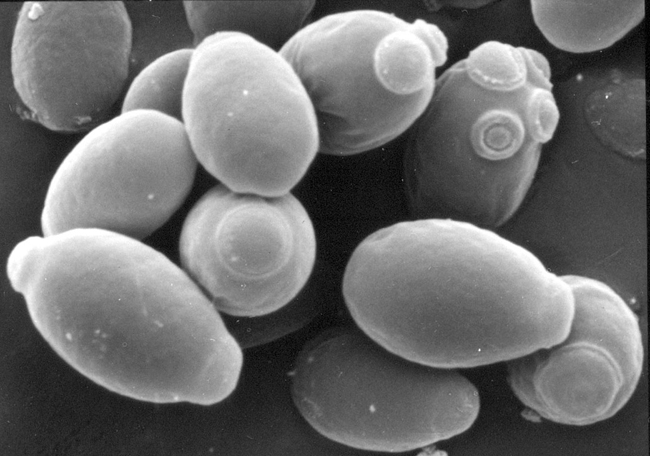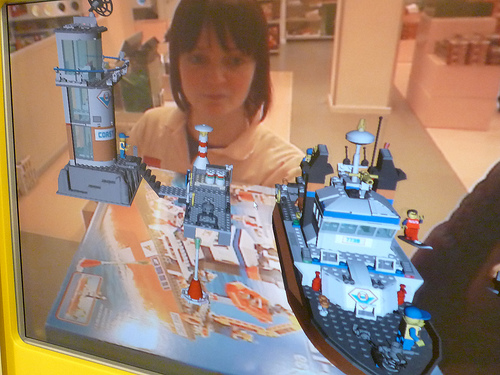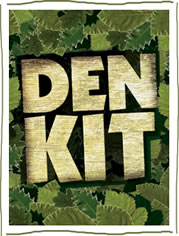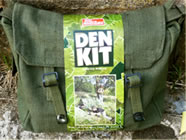This article is a follow-on from the one I wrote yesterday, which provided an overview on the packaging design aspects encountered in the recent mini series High Street Dreams on BBC1; The ‘reality TV show’ about product branding, packaging & design development. Over the series Jo Malone and Nick Leslau helped a number of individuals to launch new products.
Today we focus on Programme 3: ‘Fashion accessories’ striving to be the next fashion brand and in particular on Beryl Brewis, a single mum with 2 teenagers from Buckinghamshire, producing high quality chunky hand-knitted scarves.
Help and advice was provided to Beryl on the show in the form of fashion’s most vocal critics to give their verdicts: Nicole Smallwood from Marie Claire, Angela Bottolph online editor from Gratzia magazine, Mario Latandie from Tatler, Dolly Jones from Vogue.com and Kate Creasy from Cosmopolitan.
The general feeling was that they liked Beryl’s ‘rich & earthy’ colours, but didn’t like her chunky buttons. However, they did think that the scarves were well overpriced, considering comparable competition.
So what was the remedy? Creative Director of Pringle, Claire Waight Keller (ex-Gucci and Ralf Lauren) was brought in to give the benefit of her experience. She thought that the texture & colours were “great†but had to be ‘brutal’ to get Beryl to see ‘the bigger picture’ – not to be “too preciousâ€. So it was ‘off with the buttons’ to give a “richer more playful scarf†and a small patch of stripes to provide a much more exciting product range.
But, as with many small businesses, a major problem for Beryl is how to upscale from a 1 person operation to a larger corporation, increasing output but still maintaining Quality Control, which Beryl has tackled by using her ‘granny army’ of local OAPs.
Branding guru Perry Haydn Taylor was brought in; a top branding consultant who has branded many top products such as Boden clothing & Gu desserts. His team undertook some promotional filming which was executed well and “really brought it to life” for Beryl. Perry’s team also designed some prototype packaging, which consisted of a paper wrap-around label (see photo above). Granted, that packaging is not the main selling point for a handmade high-quality scarf, but I felt that it was pretty basic and a bit ‘lacking’, for the following reasons….
For each of the product areas covered in the TV programmes, a unique set of circumstances needs to be considered, depending on the product itself, the route to market (whole supply chain) and consumer needs involved.
Packaging performs a number of varied and important roles; containing, protecting. preserving, transporting, informing & selling and has to meet a number of important stakeholder needs at all stages of the supply chain, from manufacturing & filling, through warehousing & transportation, retail and consumer-use to final disposal or reuse.
Purchasing ‘fashion accessories’ like clothes & scarves is a much more ‘tactile shopping experience’ than for other products like foods. Whilst some up-market strategically placed packaging can enhance perceived ‘value’, the printed text is mainly aimed at reinforcing the brand credentials and providing product and bar code information for identification and tracking logistics movements and sales.
So what sort of things should Beryl consider? Let’s have a look at them one at a time:
Selling
The selling role involved for the scarf packaging will depend to a certain extent on whether Beryl takes the retailer route to market or an on-line one. If both routes are being used, the selling role is obviously more important in a store and will need to work in tandem with any merchandising at Point of Sale (POS), brochures, website design etc – it all needs to work together to provide a consistent message and brand image.
Informing
As well as the product and bar code information mentioned above, useful consumer information could include, at a basic level – scarf colour shade, scarf length, price, contact details but at a more emotional level, provides an opportunity for Beryl to ‘connect’ with her target market. She could provide all sorts of information on the brand heritage, her vision for the business, brand values, the people that knit the scarves, the quality of wools and yarns used and really build an emotional story on which to ‘pivot’ the brand.
Transporting
Retailers will want to manage & move their stock in the most efficient way possible. To enable this, as well as relevant information, they will also want scarves boxed into suitable multiples (6, 10, 12 or whatever). The shipping boxes used will have their own ITF bar code requirements to enable ease of handling & storage. Beryl might not be shipping lorry loads (yet), but boxes should certainly be designed for optimum pallet fit.
Containing
Containment is usually more of an issue for products like liquids and powders, which can spill or leak. However, Beryl might want to consider how consumers will ‘contain’ their scarves during the trip from shop to home. This is another ideal opportunity for her to provide some ‘added value’ packaging, such as high quality branded shopping bags or boxes that will raise brand awareness and ‘perceived brand value’ with consumers and act as a ‘walking’ advert through the shopping streets of our towns & cities. Take a look at the pictures here of the Saskia Rose bag and box packaging range and the Sayak jewellery packaging as stylish examples.
Protecting
One could argue that scarves, being woolen, are in little need of protection and to a certain extent that is true – certainly compared to many other products. However although fairly ‘flexible’ and ‘forgiving’, there is certainly a need to consider protection from the elements such as direct sunlight (which might cause fading), moisture (which might cause mildew), vermin attack (in dark/damp warehouses) and taint or damage from other products (such as chemicals) stored in the near vicinity during transport or warehousing. As Beryl considers export markets, these issues will become greater and more complex.
Preserving
A scarf will not have a limited shelf life like a food product, although it might well go ‘out of season’ or ‘out of fashion’. So preservation is not so much of an issue here, although optimum packaging, to protect from the dangers raised in ‘Protection’ above, will ensure that the scarves reach their destination in perfect ‘tip-top’ condition and in exactly the same state as when they left the knitting needles!
I hope that this has highlighted SOME of the packaging considerations that need to be taken into account when developing a product like a scarf and supplying it to market. Developing packaging with sustainability and the environment in mind is another area that I have not discussed and goes ‘without saying’ these days. I’m not sure how many of these were discussed ‘off camera’ during development, but they all play their role in a successful launch, and ‘branding’ is only part of the picture.
Anyhow, despite the issues that I have raised, Beryl’s products were well-liked when she ‘pitched’ to a team of buyers headed by Belle Robinson who co owns Jigsaw (she has a husband who started the brand originally) and Beryl secured an order worth £25K. So well done Beryl and we wish you every success in the future.
You can find out more about Beryl’s products from her Berylware website.
Over the next 3 days, I’ll take a look at the other 3 products covered in last two shows and as well a giving an overview of what happened in those shows and how packaging and design aspects were tackled, as above, I’ll also take a ‘step-back’ and provide my own thoughts on some of the other important issues that those entrepreneurs need to consider (or should have considered already) in the successful launch of their products to a mass market!
So keep your eyes open for the following postings on this site:
Wednesday 21st July: ‘Fashion accessories’ striving to be the next fashion brand. Claire English from Lewes, East Sussex making distinctive and eclectic homemade jewellery.
Thursday 22nd July: ‘Homeware’ – Harry Singer fro Somerset with his innovative wall hanging picture ‘Monkey frames’ ( Phlib) product.
Friday 23rd July: ‘Homeware’ – Becks (Bex) Simon an artistic blacksmith who designs beautiful one-off metal-ware objects for the home.
Chris Penfold
